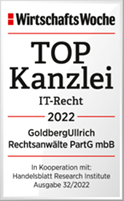In its judgement of 12 June 2009, the 6th Civil Senate of the Higher Regional Court of Cologne (OLG Köln) dismissed the appeal of the Aachen sculptor Bonifatius Stirnberg, who sought to have the horse sculpture he created in front of Aachen's main railway station moved back to its original location (Case No. 6 U 215/08). However, the appeal of the city of Aachen was also rejected, so that the city remains obliged to return the group of horses to their original formation in accordance with the first-instance decision of the Regional Court of Cologne of 23 July 2008.
In the 1970s, Stirnberg was commissioned by the city of Aachen to create a bronze horse sculpture showing five horses in a specific arrangement. An anchorage at the foot of the sculpture secured the position of the horses in relation to each other. The group of horses was placed on a small hill in the station forecourt opposite the main entrance of the station in 1977. In 2004 and 2005, the city redesigned the station forecourt, moving the bronze horses to another location to the side of the main entrance near an administrative building located there. The horses now turn their backs on this and "walk" from there towards the station. The original anchoring of the horses in the ground was not preserved; rather, they were placed in a formation to each other that differed from the original. The sculptor considered the relocation of the group of horses and the alteration of the formation and the hill to be an infringement of his copyright and appealed to the special chamber of the Cologne Regional Court responsible for copyright matters. The latter obliged the city to restore the former allocation of the horses to each other, but refused to move the sculpture to its former location.
In today's decision, the Senate rejected the appeals of both sides against the judgement of the Regional Court. The reason given was that the sculptor was not entitled to have the bronze horses moved back to their original location. The relocation of the sculpture alone did not constitute an inadmissible encroachment on copyright. It was true that the environmental reference of a work could also be part of it and thus be protected by copyright if a work had been conceived from the outset in relation to its place of installation. However, the bronze horses were not such a "site-specific" work of art, as their concrete position on the station forecourt had only been determined when the sculptor had already created the sculpture, at least as a model. The relocation had also not interfered with the artist's work to the extent that the horses could no longer sufficiently emphasise their overall spiritual and aesthetic impression at the new location and would be "crushed". The group of horses was sufficiently distanced from the surrounding buildings and objects, so that the impression was neither created that the horses came from the high-rise administration building, nor did the sculpture appear "doll-like" at the new location, as the artist had intended. Finally, the group of horses was still clearly visible from the main entrance of the main station, so that it could also not be established that the interaction between the station and the work of art, which the sculptor claimed was necessary, no longer existed at the new location. All in all, after having gained a personal impression of the installation of the sculpture, the Senate was unable to establish that the new installation site as such impaired the justified intellectual and personal interests of the artist. The author, who had willingly placed his or her work in the hands of others, usually also in return for payment, was in principle not entitled against the owner to a form of presentation of his or her work that corresponded to his or her ideas.
However, the Senate also dismissed the appeal of the City of Aachen. As stated by the Regional Court, the City of Aachen had interfered with Stirnberg's artistic work by changing the height, distance and orientation of the horses in relation to each other. As a result of these changes, the work of art conveyed to the viewer a clearly different overall impression than the design originally created by the plaintiff, whereby it was irrelevant whether the impression of the work had been improved or worsened as a result. The author did not have to allow either allegedly better or actually better ideas for execution to be imposed on him, especially since such evaluations could hardly be objectified in any case. The necessary balancing of the artist's interests in the preservation of his work and the interests of the city was in Stirnberg's favour. The bronze sculpture was a work of high creative character that was visible to everyone in a public place. On the part of the city, on the other hand, no interests worthy of protection were discernible that could justify this encroachment on copyright. The alteration of the formation had neither been necessary with regard to the use of the station forecourt nor had any other reasons been put forward that made a change in the allocation of the horses to each other necessary.
The Senate did not allow an appeal against the judgement. However, both parties can file a non-admission appeal with the Federal Supreme Court after service of the judgement.
Source: Press release of the Cologne Higher Regional Court
Goldberg Attorneys at Law
Attorney at Law Michael Ullrich, LL.M. (Information Law)
Specialist lawyer for information technology law (IT law)
E-mail:. m. ullrich@goldberg.de


